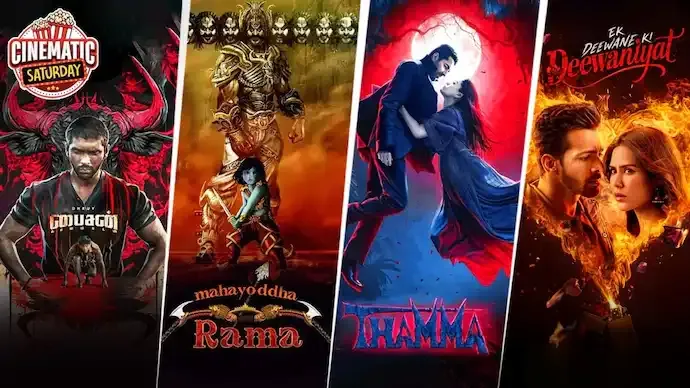Shopping cart
Your cart empty!
Terms of use dolor sit amet consectetur, adipisicing elit. Recusandae provident ullam aperiam quo ad non corrupti sit vel quam repellat ipsa quod sed, repellendus adipisci, ducimus ea modi odio assumenda.
Lorem ipsum dolor sit amet consectetur adipisicing elit. Sequi, cum esse possimus officiis amet ea voluptatibus libero! Dolorum assumenda esse, deserunt ipsum ad iusto! Praesentium error nobis tenetur at, quis nostrum facere excepturi architecto totam.
Lorem ipsum dolor sit amet consectetur adipisicing elit. Inventore, soluta alias eaque modi ipsum sint iusto fugiat vero velit rerum.
Sequi, cum esse possimus officiis amet ea voluptatibus libero! Dolorum assumenda esse, deserunt ipsum ad iusto! Praesentium error nobis tenetur at, quis nostrum facere excepturi architecto totam.
Lorem ipsum dolor sit amet consectetur adipisicing elit. Inventore, soluta alias eaque modi ipsum sint iusto fugiat vero velit rerum.
Dolor sit amet consectetur adipisicing elit. Sequi, cum esse possimus officiis amet ea voluptatibus libero! Dolorum assumenda esse, deserunt ipsum ad iusto! Praesentium error nobis tenetur at, quis nostrum facere excepturi architecto totam.
Lorem ipsum dolor sit amet consectetur adipisicing elit. Inventore, soluta alias eaque modi ipsum sint iusto fugiat vero velit rerum.
Sit amet consectetur adipisicing elit. Sequi, cum esse possimus officiis amet ea voluptatibus libero! Dolorum assumenda esse, deserunt ipsum ad iusto! Praesentium error nobis tenetur at, quis nostrum facere excepturi architecto totam.
Lorem ipsum dolor sit amet consectetur adipisicing elit. Inventore, soluta alias eaque modi ipsum sint iusto fugiat vero velit rerum.
Do you agree to our terms? Sign up

Diwali has long symbolized family gatherings, sweets, and spectacular movie releases — a time when theatres across India glow as brightly as diyas. From Dilwale Dulhania Le Jayenge to Golmaal Again, the festival has been synonymous with blockbuster openings and packed halls. But Diwali 2025 presents a shifting landscape — one where storytelling is taking precedence over star power.
This year’s line-up features Thamma, Ek Deewane Ki Deewaniyat, and Mahayoddha Rama from Bollywood, alongside mid-range South titles like Bison: Kaalamaadan, Diesel, Telusu Kada, and K-Ramp. Despite a full slate, trade experts note an unusual absence: no major South Indian tentpole or pan-India spectacle.
Hindi cinema’s Diwali offerings reflect a mix of genres and ambitions. Maddock Films’ Thamma — a horror-comedy starring Ayushmann Khurrana, Rashmika Mandanna, and Nawazuddin Siddiqui — leads the pack. Milap Zaveri’s romantic drama Ek Deewane Ki Deewaniyat and the animated family adventure Mahayoddha Rama round out the list.
Trade expert Girish Wankhede calls it “a balanced Diwali line-up that caters to all audiences.” He notes, “Thamma is the biggest draw in terms of scale and star power. Ek Deewane Ki Deewaniyat appeals to the youth, while Mahayoddha Rama targets families.”
According to him, Diwali remains India’s most lucrative release window, capable of generating a collective weekend haul of ₹200 crore. For Khurrana, this could mark a turning point — a chance to reclaim his place among mainstream box-office contenders.
Film producer and trade analyst Girish Johar explains that while Diwali continues to be a profitable season, audience preferences are evolving. “People still want joy, humour, and family moments — but not necessarily from traditional entertainers. Today, connection matters more than convention,” he says.
Johar estimates that the Diwali day viewing potential lies between ₹50–70 crore, depending on word-of-mouth. “We’re in a ‘K-shaped’ market — hits soar instantly, flops collapse overnight,” he adds, citing how audiences have become more discerning post-pandemic.
While Bollywood lights up screens, the South industry is uncharacteristically quiet. With no major releases from Rajinikanth, Kamal Haasan, Allu Arjun, or Vijay, the focus shifts to smaller projects.
Trade expert Ramesh Bala attributes this to scheduling flexibility rather than waning ambition. “Southern industries don’t always align releases with Diwali. Tamil Nadu celebrates it grandly, but Andhra Pradesh and Kerala prioritize other festivals like Sankranti or Ugadi,” he explains.
Instead, Bala notes a rise in content-led success stories. Kantara Chapter 1, still performing in northern markets, continues to capture audiences. “Its sustained run shows that timing matters less than storytelling,” Bala remarks.
From DDLJ and Kabhi Khushi Kabhie Gham to Om Shanti Om and Sooryavanshi, Diwali has traditionally delivered crowd-pullers. Yet failures like Thugs of Hindostan serve as reminders that lavish productions cannot mask weak writing.
As Wankhede points out, “Audiences today seek authenticity. Emotional resonance and coherent storytelling define success — not just scale.”
In 2025, a Diwali hit no longer depends solely on star-studded spectacles. It’s about the right blend of story, timing, and emotion. Theatres still gear up with extra shows and festive discounts, but the audience’s mindset has matured.
“People don’t just watch a film on Diwali,” says Johar. “They watch something on Diwali.” Whether that’s a horror-comedy like Thamma, a mythological animation like Mahayoddha Rama, or an experimental Tamil film like Bison, the celebration continues — not through glittering budgets, but through shared stories that connect.
Diwali 2025 marks a turning point in India’s festive cinema calendar. Bollywood continues to own the festival spirit, while South industries strategically chart their course around it. The result is a more diverse, unpredictable, yet creatively vibrant box office season — one where content, not calendar, decides who truly shines.
29
Published: Oct 11, 2025